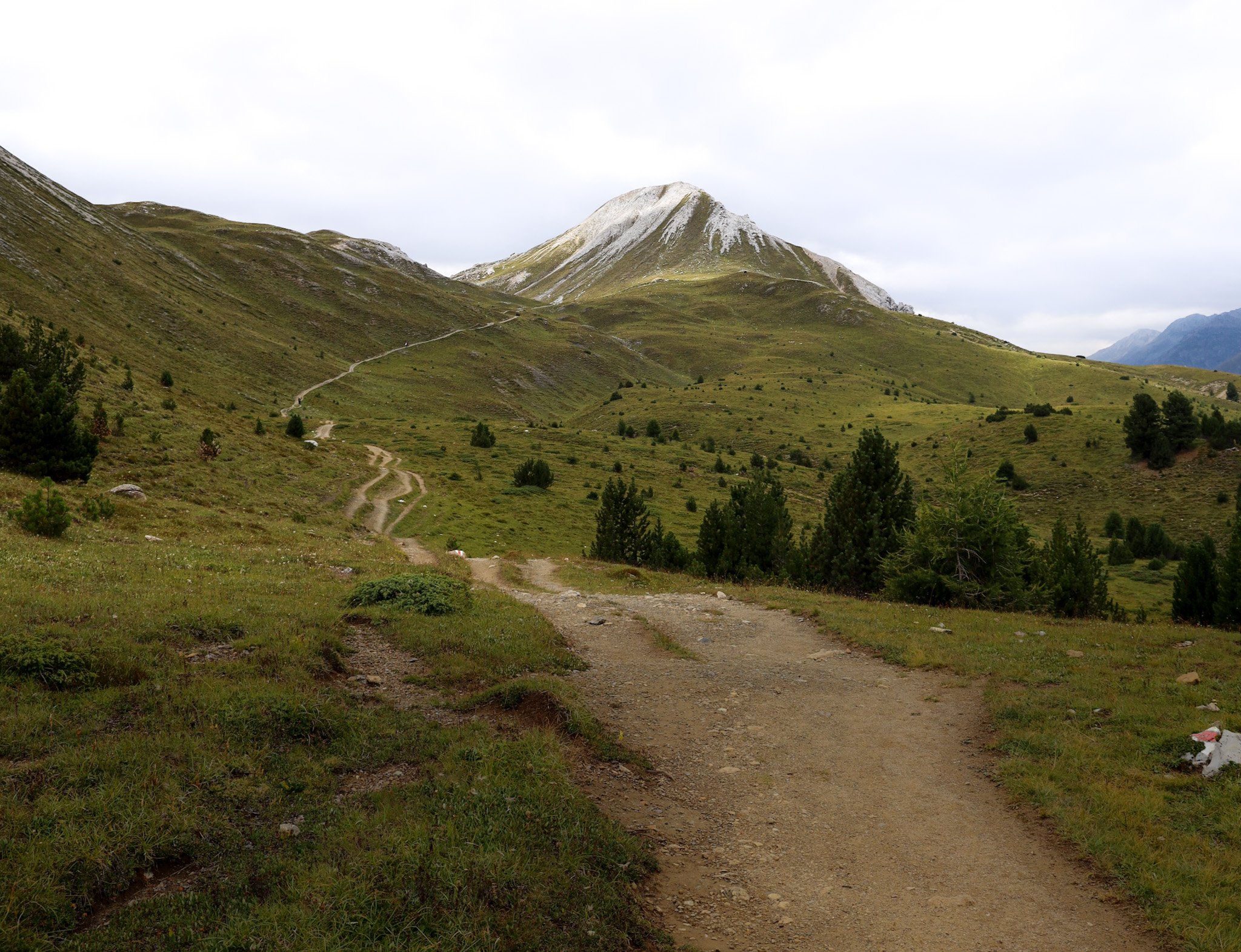
SWISS NATIONAL PARK
INTRO
Located in the Western Rhaetian Alps in eastern Switzerland, Swiss National Park is the oldest national park in the Alps and one of the oldest in Europe — plus, Switzerland's only national park. Most people visit to hike, opting for one of the ~20 treks in the park. Along with stunning mountain and lake vistas, the park’s alpine and forest landscape is home to many flora and fauna, including chamois, deer, and (my personal favorite) marmots.
We visited Swiss National Park in July 2022 and enjoyed a few days of hiking there. The nearby town of Zernez is also quite charming, though expensive — as is typical of Switzerland. See below for everything you need to know to plan your trip to the park!
WHAT YOU NEED TO KNOW
Duration: 2-4 days
When to go: Open year-round, but the best hiking is in the summer months of July and August
Accommodations + facilities: If you want to stay in the park and have a higher budget for accommodations, there are two options: Chamanna Cluozza (mountain hut) or Hotel Parc Naziunal Il Fuorn. We opted to stay in nearby Zernez at Camping Cul Zernez, a great campground with nice kitchens and bathrooms, free WiFi, and easy access to the park via public transit. It was the most affordable option we could find, with spaces for tents and cabins for rent. It's also walking distance (~150 m) from the Zernez train station — where you'll arrive in town. Whatever you opt for, I would highly recommend reserving in advance, especially during high season (July/August).
Food + water: Bring enough food and water for your time in the park — there aren't too many spots to fill up water along trails, and the only place we saw to buy food was at the very fancy hotel in the park. If you're staying in the nearby town of Zernez, there are a few markets in town where you can easily buy groceries, snacks, etc.
Guide or no guide: No guide needed — the trails are very well-signed!
Difficulty: There are over 20 hikes throughout the park with options for all levels of difficulty
Make sure you have: The public transit schedule — you’ll want to plan your hike around the bus and train schedule if you’re commuting from Zernez to the trailheads. See below under “Getting There” for more info on this.
Primary costs: Our main costs for our visit to Swiss National Park were as follows:
Park entry fee: free!
Public transit cost: this will depend on what you want to do in the park, but shouldn’t be too expensive. Our accommodation included a public transit pass so we didn’t have any expenses in this category. See below under “Getting There” for further details on public transit around the park.
Camping Cul Zernez cost: the campground does not have a flat rate — you pay a variety of fees based on factors such as the number of people in your party, the number of tents you have, a daily garbage fee, if you have a dog, if you have a car, etc. You can calculate what you’d pay based on your setup with the chart on their website. For reference, we rented one of the campsite bungalows with a friend and paid $340.39 total for the three of us for three nights at the campsite.
Park Visitor Centre entry fee: ~$10 (CHF 9) for adults
THINGS TO DO
We only had 3 days here so chose a few longer trails to see as much of the park as we could. For more trails, see the park’s “Walking Routes” page or the Swiss National Park AllTrails page. Below are the hikes we did and would recommend all of them:
Vallun to Zernez hike: moderate/difficult point-to-point hike through the park; about 10.5 miles, ~4,000 feet of elevation. Beautiful mountain vistas and wildflowers!
Val Trupchun hike: moderate/difficult out-and-back hike, about 10 miles, ~1,500 feet of elevation. Again: beautfiul mountain vistas and wildflowers galore.
Berggathus to II Fuorn hike: moderate point-to-point hike using bus system; about 7 miles, ~1,600 feet of elevation. You guessed it: mountains and wildflowers.
Check out the National Park Centre in Zernez: to be honest, I don't really recommend it if you're short on time but I feel like I have to include it considering this blog’s entire focus is on environmental travel and education. I love a good visitor center but found the exhibits here to be in a really weird style and learned way more from my own research online than here.
GETTING THERE
The national park is easily accessible by public transport. First, you need to get to Zernez — the closest town to the park — via train from any major Swiss city. Just use the online portal for Switzerland's national railway company (SBB CFF FFS) to map your journey to the Zernez station. From Zernez, you'll use different trains and buses to get to and from various trailheads — making point-to-point hikes super accessible. Once you know what hikes you want to do, I'd recommend asking the National Park Visitor Centre or your accommodation host for the best public transit options and/or using this page from the park website for timetables and route options.
Last updated: 15 August 2022
